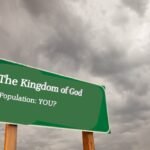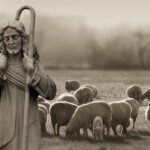The Origin
All Scripture is from God; an instruction manual that is divinely inspired.
The “theme” of the Bible is the same from Genesis to Revelation.
98 % of the world’s population has a Bible translated in their own language. The Bible is the world’s best selling book and also the book most stolen.
Exodus 24:3-4 Then Moses came and recounted to the people all the words of the Lord and all the ordinances…And Moses wrote down all the words of the Lord…
Deuteronomy 6:6-7, 9 And these words which I am commanding you today shall be on your heart; and you shall teach them diligently to your sons and daughters…And you shall write them on the doorposts of your house and on your gates.
2 Timothy 3:16-17 All Scripture is inspired by God… (God breathed) and profitable for doctrine, for reproof, for correction, for instruction in righteousness so that the man of God may be adequate, equipped for every good work.
2 Peter 1:20-21 But know first of all that no prophecy of Scripture is a matter of one’s own interpretation, for not prophecy was ever made by an act of human will, but men moved by the Holy Spirit spoke from God.
Men of God are the mouthpiece and instrument, directed by the Holy Spirit of God, to convey God’s message to us. 36-40 men from kings to fishermen wrote the words of God beginning with Moses and ending with the apostle John. All of these men were Hebrew except Luke who was a Greek physician. Luke 1:1-4, Acts 1:1-3, 20:5-15, Col 4:14.
Preservation of the Old Testament
The Old Testament is written mostly in Hebrew and a few portions in Aramaic spanning 4000 plus years. Old Testament scrolls called manuscripts were written by scribes. Autographs are the originals but none exist today. When they start to show wear and tear, they are carefully copied and the old scroll is destroyed. They were written on animal skins. Every word and letter was counted. The middle letter was used as a measuring tool to ensure accuracy. If a mistake was made, the entire manuscript was destroyed.
The oldest surviving manuscripts are the Dead Sea Scrolls written around 200 BC. They were discovered by Bedouin shepherds in 1947. The scrolls were found in caves near the ancient community of Qumran. They had been placed in pottery jars and the dry climate helped in preserving them. The Essene zealots lived in the Qumran community. They hid their scrolls in the caves before the Roman army destroyed their community in 68 AD. Segments of every book of the Old Testament were found except for Esther. A complete copy of the book of Isaiah was found. The book of Esther was found in Persia (modern day Iran).
The Masoretic Text was written over a period of 500 years by Jewish scholars from about 500 to 1000 AD. They were able to purify the old copies, removing errors and added vowels points to the Hebrew text to insure the accuracy of pronunciation and meaning. Oldest of these surviving manuscripts are dated around 895 AD. The Dead Sea Scrolls and the Masoretic Text span a difference of 1000 years. They remarkably agree with each other confirming the accuracy and fidelity by which the Old Testament has been copied for centuries.
The Septuagint, Old Testament Scriptures were translated into Kione (common) Greek by 70 Jewish scholars in the 3rd century BC in Alexandria,
Egypt for the King of Egypt. Between 285-246 BC, Ptolemy II (Philadelphius) (son of Ptolemy the I) commissioned around 70 Hebrew scholars to produce Scriptures in the Greek Kione language which was the spoken language of the Middle Eastern Nations including Egypt. These OT Scriptures became know as the Septuagint and were for the Royal Library in Alexandria. The scholars asked for copies to be given them to take back with them to Jerusalem.
Preservation of the New Testament
The Septuagint was the “Bible” of the Greek speaking world during the time of Jesus and the apostles. Writers from the New Testament took the majority of their Old Testament quotations from the Septuagint.
The New Testament is written in Kione (common) Greek spanning approx 60 years from AD 40-100 by apostles and followers of Christ.
There are over 5,000 fragments of New Testament manuscripts dating from 125 to 1500 AD. The earliest manuscripts were written on papyrus scrolls.
The most notable are:
- The Chester Beatty Papyri are dated about 250 AD. These contain the oldest know copies of Paul’s epistles and Revelation chapters 9-17.
- The Bodmer Papyri are dated about 175 to 225 AD. These contain John 1:1-14:26, Luke, Jude and 1 and 2 Peter.
- The John Rylands Fragment dated about 125 AD and are only 30 to 40 years removed from the autograph. This contains John 18:31-33, 37, 38.
Later copies were made in vellum and parchment books called codices which were introduced in the 2ndcentury AD. The oldest codices are:
- Codex B (Vaticanus)AD 325-350 housed in the Vatican Library in Rome.
- Codex Aleph (Sinaiticus)AD 340 discovered by a German count in a trash pile at the Greek Orthodox monastery atop Mt Sinai in 1844. It is now in a British Museum.
- Codex A (Alexandrian)AD 450 is also in a British Museum.
- Codex C (Ephraemi Rescriptus)AD 345 is located in the Paris National Library. This manuscript at one time was erased to that other material could be written over it. By means of chemical reactivation, the underlying Biblical text has been faintly restored.
With the papyri and codices along with a great number of other New Testament manuscripts, Biblical scholars were able to weed out the mistakes of copyists and thus virtually reconstruct the original Greek text. Most of the textual variations are matters of spelling and grammatical form which have no effect on the overall meaning of the text.
Canonization
Canon is a Greek term which means a “measuring rod” or “ruler”. This word refers to the standard by which the books were measured for authenticity.
There were 22 books to the Old Testament in accordance with the number of letters in the Hebrew alphabet. The Hebrew Bible is divided into three categories: five books of the “law”, eight books of the “prophets” and nine books of the “writings”. In today’s Bible we have 39 books which is the same material as the 22 books. The Hebrew canon counted the 12 Minor Prophets as one book. Samuel, Kings and Chronicles are also counted each as one book instead of first and second as is listed in our Bibles.
In Luke 24:44-45, Jesus recognized the Hebrew and Greek Old Testament as being “the Scriptures”. He said to them, “These are My words which I spoke to you while I was still with you, that all things which are written about Me in the Law of Moses, and the Prophets and the Psalms must be fulfilled.”
The 27 books of the New Testament canon were being read in public worship by the end of the first century AD. The 2nd century church decided on the books that should be included in the New Testament. The official canonization of the New Testament was at the Council of Chalcedon in 451 AD. These 66 books of the Bible became the Protestant canon which we use today. In order for a letter or book to be included in the New Testament Canon the following criteria was followed:
- It must contain quotes from the Old Testament.
- The author must be an eye witness to the events of Jesus’ day.
- The author could have been a companion of Jesus.
- The book or letter is used in public worship.
- The book has equal footing as the Old Testament.
- The book should contain the “common thread” that runs through the Old Testament.
At the Council of Trent in 1546 AD in response to Martin Luther’s Protestant Reformation, the Catholic Church added the Apocrypha to their Bible. They have 73 books in their Bibles which they claim gives them a higher authority.
History of the English and Other Languages Bible
As Christianity spread, it was necessary to translate the Greek and Hebrew Scriptures into the languages of the people who were being brought the message of salvation.
The first translations of the Scriptures were in Coptic, Syriac, Armenian, Ethiopic and Latin languages.
In 382 AD, Damascus, the Bishop of Rome, commissions Jerome to translate the Scriptures into Latin. This took 23 years (completed in 405 AD) and was known as the “Latin Vulgate or ‘common’ Bible”. This was written in the common language of the people since Rome has conquered all of the known world. The Vulgate was the official Bible of the Catholic Church and became the predominate translation used by missionaries from Rome in their travels to Europe and the British Isles.
Only the educated people could read and understand Latin. Most of the people’s knowledge of God’s Word was from sermons and stories, religious plays in the market places and religious paintings, carvings, sculptures and stained glass windows which decorated the churches.
Early English versions were few since there were very few manuscripts available of the Hebrew & Greek to translate from.
- Aldhelm, Bishop of Sherborne translated the Psalter in 700 AD.
- Egbert, Archbishop of York translated the first three Gospels in 705 AD.
- The Venerable Bede, a monk at Jarrow and the greatest English Scholar of the day, translated the Gospel of John in 735 AD.
- Alfred the Great, King of England and a scholar in his own right translated the Ten Commandments, Exodus 21-23 and Acts 15:23-29 into Anglo-Saxon in 870-901 AD.
- Aldred, a priest, wrote an interlinear translation of the Gospels into the Northumbrian dialect between the lines of a Latin Bible 950 AD.
The First English Bible
No complete English translation of the Bible existed until the Wycliffe Bible appeared in 1384. Nicholas of Hereford and John Purvey translated the Bible from the Latin Vulgate into English. These handwritten Bibles were very expensive costing over $500.00 each. They were produced before the invention of the printing press.
John Wycliffe, a scholar and theologian who was an opponent of the papacy believe that the people should be governed by the Bible alone. He organized poor priests called “Lollards” to travel the countryside to preach and read the Bible to the people in their own language instead of Latin. This was the beginning of the Protestant Reformation.
The Catholic Church declares the Wycliffe Bible as heresy and the common people need the permission of the Bishops to read the Bible. The Catholic Church claimed that the Latin “holy tongue” was being degraded into the common language of the people. The church claimed that since most of the people were uneducated, they would misinterpret the Scriptures. Only the “church” could properly interpret God’s Word since they were the only ones with a direct line to God.
John Wycliffe died in 1384, the year the Bible bearing his name appears. Forty-four years later the Catholic Church digs up his bones, burns them and scatters his ashes in the River Swift. Readers and distributors of the Wycliffe Bible are being arrested and punished for having this Bible in their possession. Some are being burned at the stake for this crime.
The Father of the English Bible
In 1456 the Gutenberg Bible, which was translated from the Latin Vulgate into German, came off the printing press of Johann Gutenberg. In Euope, Bibles are now being produced in the other languages such as Spanish, Italian, French, Dutch, German and Bohemian.
In 1523, William Tyndale, a scholar skilled in Greek and Hebrew, saw a need for the Scriptures to be translated into English from the original languages instead of the Latin Vulgate. He requests the support of the Bishop of London but his request was denied. Tyndale leaves England in 1524 and arrives in Germany to work.
In 1525, Tyndale secretly completes the translation of the New Testament from Greek into English. He is discovered before he can have any copies printed. He escapes to Worms and manages to get 3,000 copies printed in February 1526. Copies are smuggled into England in cargo shipments. The English church orders all copies to be confiscated and burned. Tyndale, who is still in Germany, tries to have the New Testament printed faster than they can be destroyed.
In 1530-1531, Tyndale translates part of the Old Testament from Hebrew into English. In May 1535, Tyndale is captured and in October of this same year, he is strangled and burned at the stake. His last words were, “Lord open Thou the King of England’s eyes”. 90% of the King James Version comes from the Tyndale Bible.
Miles Coverdale, a fellow scholar and associate of Tyndale, completed Tyndales’s Old Testament and revised his New Testament using the Latin and German versions of the Bible instead of the Greek and Hebrew Scriptures. This version found great acceptance in England since the King of England’s divorce put him at odds with the Catholic Church. Henry VIII, the King of England started the Anglican Church and became the head of that church. One year after Tyndale’s death, Coverdale’s Bible (which was essentially Tyndale’s work) was being distributed in England without persecution. Tyndale’s prayer had been answered.
In 1537 another English Bible is published and sent to England. This is known as the Matthew’s Bible. It was published under the name of Thomas Matthew but was actually the work of John Rodgers, a close associate of
Tyndale. The Matthew’s Bible was a revision of Tyndale’s material. The Great Bible, the Bishops’ Bible and the King James Version, plus its revisions are based on material from the Matthew’s Bible.
Now there are two English Bibles in print. There is controversy between the Coverdale and Matthew’s Bibles since John Rodgers added comments and notes into the margins of the Matthew’s Bible. King Henry authorizes Thomas Cromwell, his Lord Chancellor to proceed with a revision that would please both factions. Miles Coverdale was in charge of this work. He removed the notes and comments in the margins. This Bible is published in 1539 and is known as the “Great Bible” due to its large size.
In the 1540 edition, the Archbishop of Canterbury declared on the title page, “This is the Bible appointed to be read in the churches”. King Henry VIII issued a decree that every church was to set up a Bible of the largest size and all were exhorted to read it.
The Great Bible was the first and only Bible to be officially authorized for church use by a king of England. The King James Version does not hold this honor. The Great Bible is chained to the walls to prevent it from being stolen. The Great Bible now carries the approval of the Bishop of London who initially opposed Tyndale’s English Bible. Public reading was banned outside of churches while services were being conducted because the noise of the readers disrupted the services inside.
In 1539, Richard Tavener, a Greek scholar and lawyer published his own revision of the Matthew’s Bible. He improved the translation of the New Testament but the Great Bible had greater influence since it was being promoted by the king.
During the period from 1539-1560 there is political and religious turmoil in England as the Catholic Church pressures the king to ban all English versions bearing the name of Tyndale with the exception of the Great Bible. King Edward who succeeds his father is pro-Protestant and restores the reading and printing of English versions.
King Edward is succeeded by Mary, his sister, a devout Roman Catholic, who is known as “bloody Mary”. She reverses the edicts of her brother and puts to death many Protestant reformers. Many of the English reformers (Puritans) flee to Switzerland and settle around Geneva.
The Puritans produce another English version known as the Geneva Bible. The Old Testament is from the Great Bible and the New Testament is from Tyndale’s Bible. This Bible is the first “modern version”. It is the first to divide chapters into verses, to use italics to indicate words not in the Hebrew and Greek, but necessary in English. It is the first to be printed in Roman letters and also contained summaries, marginal notes, commentaries, etc. This version soon becomes the most popular family Bible in England and Scotland. It is the Bible used by William Shakespeare and the Bible brought to America by the Pilgrims. This Bible is more popular than the Great Bible and has not been authorized by the king. The Geneva Bible is written by common people for common people.
Queen Elizabeth I succeeded her sister Mary to the throne of England and reinstated the reading of the Great Bible in the churches. The Geneva Bible was more popular with the people but was rejected by the Anglican Church. A compromise is sought with the Archbishop of Canterbury directing a committee to revise the Great Bible.
The revision of the Great Bible is completed in 1568 and is known as the Bishops’ Bible. This Bible was used in the churches until 1611 but was never popular with the people. The Bishops’ Bible is the immediate predecessor of the King James Version. Certain Latin expressions are carried over into the King James Version such as the word “charity” for “love” in 1 Corinthians 13. The Bishops’ Bible served as the version on which the church authorities would “officially” base the King James Version.
When Elizabeth I became queen, many Catholics fled England to Flanders. In 1568 they established a college which later moved to Rheims, France. Using the Latin Vulgate, they translated the Bible into an English version known as the Rheims-Douay Version. They put a warning into the preface about the reading of Scriptures by the laity. This English version was also used by the King James translators and is responsible for the many Latin terms found in the King James Version. The latest Catholic version is the New American Bible of 1970.
The King James Version
King James I ascends the throne in 1603. He did not like the notes in the Geneva Bible because it criticized the monarchy. Thinking of himself as a scholar, he wanted a Bible that would ensure the people knew of the divine rule of the monarchy. In 1605 he selected 54 Anglican Puritan scholars to provide a new translation which would meet the approval of the “whole” church. Only 47 scholars actually participated in the effort when it began in 1607.
Rules set forth by the king for the new Bible were:
- The translators were to read the Bishops Bible and use it as the basis for the new translation.
- The translators were allowed to reference other sources if they were closer in truth and meaning to the Greek and Hebrew Scriptures.
The 47 scholars were divided into six committees and each was responsible for the work on a specific section of the Bible. They completed their work in 33 months. A final editing committee took nine months to review the work and approve it for publication. The first edition was printed in 1611.
- 60 % of the wording came from previous versions
- 19% came from Tyndale’s Bible
- 18% came from the Geneva Bible
- 5% came from the Bishops Bible
The King James Bible was not very successful at first due to the popularity of the Geneva Bible. Some said that it was a “corruption of God’s Word”. Others objected to the king’s name being on the Bible. The King James version has only been popular for the past 300 years. From 1611 until 1769, the King James Bible under went five major revisions to correct spelling, lettering, punctuation and updating the language to modern usage. The 1769 version is the Bible that is currently in use today. This is the 7th revision of Tyndale’s work.
There are many reasons for modernizing the language of the Bible into the current vernacular. Some major reasons are:
- The Bible changes peoples lives and should be in the language of individuals that are trying to read and understand it.
- The Bible impacts culture, customs and traditions.
- The Bible provides a moral standard for people.
- The Bible has a rich heritage, poetry and beauty.
- Language evolves over time and words now have different meanings than when they were first used.
The progression of the language of the Bible for the American reader is: Hebrew, Greek, Latin, European tongues, English, and American.
The discovery of the Dead Sea Scrolls in 1947 validates the earlier versions of the Bible. Approximately 5,000 manuscripts were found along with a complete version of the book of Isaiah. The more recent versions of the Bible have used these manuscripts as their basis. In addition to the Dead Sea Scrolls, there are also the codices and papyrus scrolls from which to glean information. When translating the King James Version, there were only 25 manuscripts available.
Revisions of the King James Version
The King James Bible itself was revised from 1611 to 1769.
In 1885 an English Revised version was written based on newly discovered manuscripts.
In 1901 the American Standard Version was completed. It updated the antiquated English terms. It is known as a “word for word” translation.
In 1952 the Revised Standard Version was finished. It was produced due to advances in biblical scholarship and changes in English usage.
In 1971 the New American Standard Bible was produced. It is an accurate and literal rendering of the Greek and Hebrew Scriptures based on the more recent discovery of older manuscripts. It is a “word for word” translation.
In 1970 the King James II was finished. This Bible was not well received.
In 1982 the New King James Version was completed in updated American language. This is a “word for word” translation.
The main reason for these revisions is to bridge the gap between the 1611 version and contemporary speech. It helps to improve our understanding along with the Holy Spirit and prayer. We should continually be seeking “the truth”.
Other versions of the Bible not based on the King James Version are:
- The Modern Language Bible 1959, a simple rendering of the original languages into contemporary English.
- The Phillip’s New Testament 1958 is a “meaning for meaning” translation for JB Phillip’s youth group.
- The Amplified Bible 1965 has a built in Thesaurus and mini commentary and is useful as a “word” study Bible.
- The Jerusalem Bible (Catholic) 1966 produced in Britain as a counterpart to the French translation of the same name using the original Greek and Hebrew scriptures. It is considered to be a dynamic equivalent translation.
- The New Jerusalem Bible (Catholic) 1985 (produced in Britain) is closer to a “word for word” translation in response to criticism of the 1966 version.
- New American Bible (Catholic) 1970 is an American version translated directly from the Greek and Hebrew Scriptures. This version is currently the best selling Catholic Bible in the US.
- Today’s English Version (Good News Bible) 1976 is a version that is easy to read and understand especially for those whom English is a second language.
- The New English Bible 1970 is an “authorized” version for church use produced for the British Isle churches. This is not a revision of the King James Bible, but a new version.
- The Revised English Bible 1989 is an updated version of the New English Bible making this Bible more readable in the current British language.
- The Living Bible 1971 is a paraphrase Bible designed to bring the reading level down to a child’s level of understanding.
- The NIV (New International Version) 1978 is a major modern-speech translation using the most recently discovered Greek and Hebrew manuscripts. This work was produced by scholars from the United States, Great Britain, Canada, Australia and New Zealand. Each book was prepared by a group of experts and then submitted to three different editorial committees for review. This translation is clearer, more accurate and lends itself easily to private and public reading and worship. This Bible has surpassed the King James Bible as the number one selling Bible in America.
- The International Children’s Bible 1986 is a translation for children at a third grade reading level. It includes pictures, maps and a dictionary. It was originally produced for deaf children and their unique speech patterns.
- The New Century Version 1991 is in simple English Bible for children and adults. It is at a fifth to sixth grade reading level. It is a Bible for everyday use and is not a paraphrase.
- The Tanakh (New Jewish Version) 1985 is an updated Bible based upon the latest Biblical scholarship and English idioms. It contains only the Old Testament which includes the Law, Prophets and Writings. This Bible has a distinct Jewish perspective on the Jewish culture and is the version for English speaking Jews.
How to Select a Bible
There are many versions and translations of the Bible in English/American. With so many choices, we need a way to determine the Bible that best fits our needs. We should have sound criteria for making a selection. Below are some things to take in consideration:
- Accuracy—does it stay true to the Greek & Hebrew
- Readability—do I understand what it says
- Study Bibles—for in depth Bible study
- Tradition—this what my parents or grandparents used
- Concordance in the back
- Interlinear (side-by-side or underneath) word for word
- Large print
- Cross reference tools
- Red letter edition
- Wide margins for adding own notes
- Age appropriate
- Maps and historical content
- Commentary
Another method is to look at three basic categories:
- Number of translators
- Do they have a good understanding of Greek and Hebrew?
- What source material did they use?
- Committee translations tend to be more conservative.
- Committee translations have checks and balances to ensure a more accurate rendering of the text.
- What is the motive for another translation? Is it to only make money?
- In a one man translation, his personal bias can be written into the text. His style of writing is constant throughout.
- Method of Translation: There are four methods employed by most translators:
- Formal Equivalence. This is a “word for word” translation with Young’s Literal Translation as being the extreme. It has a very stiff syntax and is hard to understand. The New American Standard Bible, the King James Bible, the American Standard Version, the Amplified Bible, the English Revised Version and the King James II Version are “word for word” but have a less rigid and stiff syntax.
- Closest Equivalence. This uses a combination of Formal Equivalence and Dynamic Equivalence which is “meaning for meaning”. The translators use the “word for word” method as long as it results in good English. If not, then they use the “meaning for meaning” method. The Modern Language Bible, the Revised Standard Version and the New King James Version are examples of this method. The New International Version and the Tanakh (New Jewish Version) lean more toward Dynamic Equivalence.
- Dynamic Equivalence. This is a “meaning for meaning” translation. It often restructures the Greek and Hebrew sentence patterns to make it easier to read and understand since it is in the current language of the day. The Jerusalem Bible, the New American Bible, Today’s English Version, the New English Bible and the International Children’s Bible are examples of this type of translation. The Phillip’s New Testament Bible is a Dynamic Equivalence and a Paraphrase Bible.
- This is a restating of the an earlier version into simpler words of the same language. It is the personal interpretation or explanation of an individual. An example of this type is the Living Bible.
- Style of Language
There are three styles of language; the Archaic, the Semi-Archaic and Contemporary. The Spirit of God works in us to help us understand the text we are reading. As languages evolve, what is today’s contemporary translation is slowly becoming tomorrow’s archaic version. The best versions are those that use a contemporary but dignified language. The message of the Bible is never out of date but the language may be.
Specific Guidelines
When choosing a Bible, there are some guidelines one should consider:
- Read the preface and introduction to determine the number of translators, the method of translation and the style of language. Most introductions will state the reason for the translation, the purpose for which it is intended (private study, public worship or casual reading), its audience and the theological orientation of the translators.
- Note the source of the Hebrew and Greek texts used for translation (older or Middle Ages versions).
- Thumb through the translation to determine the style of language.
- Does this Bible use footnotes or marginal references to inform the reader of other places where this word is used and its possible meaning? Just a reminder—study notes are not the Word of God. 5) Is the page layout pleasing to the eye and easy to read? Does it incorporate paragraphs and stanzas for poetry?
Recommendations
For those who feel that the King James is the only Bible but its language is out of date, they should try the New King James Version. Elementary school-age children with limited vocabularies should try the International Children’s Bible or Today’s English Version. For general use, teens and adults will find the New International Version easy to read and understand. For in-depth Bible studies, word studies or topical studies The New American Standard Bible is the best.
In Genesis 11, God confused the language of the people and scattered them across the face of the earth. Through His Word, God unites His people again.
Only when the book is opened, read and understood can it change lives. We must have the Word of God living in our hearts if it is to be of any value at all. May the Bible live in you so that others may read your life and be drawn to God.
NOTE: Most of the information used in the article is from the booklet “How We Got The Bible” by the Bible Advocate Press.























